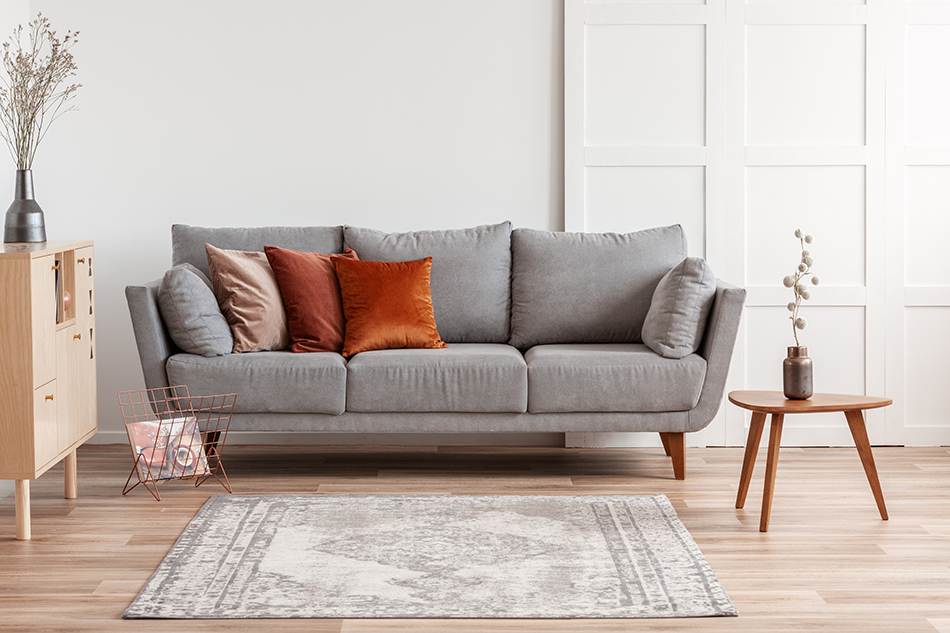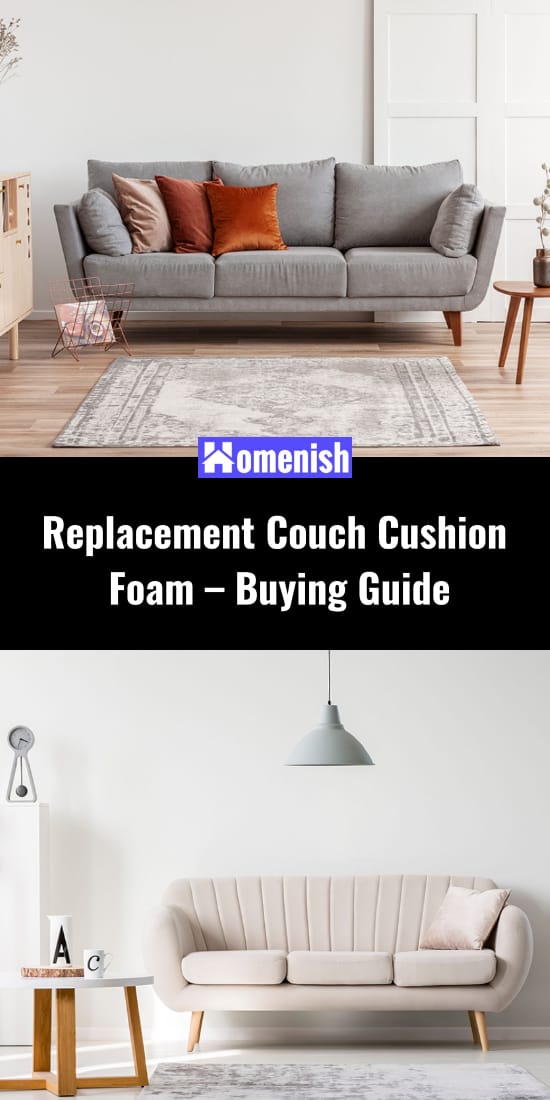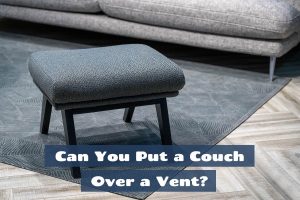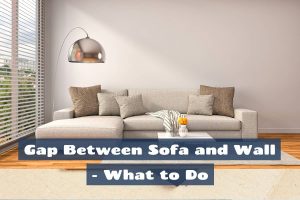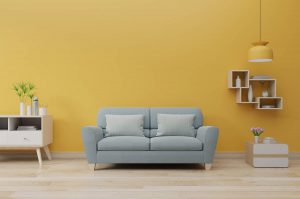Cushion foam is one of the most important parts of a sofa that determines the seat’s lifespan and comfort. The foam cushion’s lifespan primarily depends on the foam’s quality and is often measured by the density of the foam.
The weight or foam density isn’t something that many people pay much attention to when choosing couches, but it is, nevertheless an essential parts of a good-quality sofa and couch. After all, it is the density that determines just how soft the couch is as well as how long it will last. Generally, the higher the foam density, the longer the couch will last.
If your old sofa doesn’t feel as soft and comfortable anymore, then it’s time to consider replacing the cushion foam. Here is a detailed guide to help you choose the best replacement cushion foam for a sofa or couch.
What is Foam Density in a Couch?
Couch foam is measured by compression and density. Density refers to the amount of material used in the foam. Generally, the denser the foam, the more it will weigh.
The standard foam density for sofas and chairs is 1.8 inches in thickness. A 1.8 density cushion typically lasts up to 3 years before it requires replacement. If the foam density is greater than 2 inches, the cushion will last as long as ten years, depending on the material used. Replacing the cushion form is one easy step in reupholstering a couch.
Low-density foam is typically used for padding of back cushions and arms of the chairs. Higher-density foam, on the other hand, can be found on more expensive furniture.
All in all, the cushion’s performance and its foam density go hand in hand, so the denser the foam, the more support it will offer you while you relax on the couch.
Common Types of Couch Cushion Foam
Polyurethane Foam
Polyurethane foam, also known as poly foam, is the cheapest material available on the market. It is made from petroleum and one of the most commonly used foams in sofa and seat cushions.
This type of foam is made in a multitude of grades that determine its expected lifespan and firmness. With a wide variety of uses, polyurethane foam can be found in most upholstery stores. Since this foam is made from a petroleum source and therefore not a renewable resource, it is not considered an eco-friendly product.
Another drawback to this type of foam is that over a short period of time, it will sag and deteriorate. Once this happens, the foam won’t return to its original shape, thus only lasting between 2-3 years. And since polyurethane is the lightest foam type, it doesn’t perform as well as other cushion foams.
Pros
- Does not accumulate dust
- Very soft to the touch
- Sturdy enough to hold the weight
- Cheapest foam available
- Lightweight
Cons
- Not durable
- Often sags when used improperly
- Too soft
- Can deform in direct sunlight
Medium Density Polyurethane foam
Medium-density antimicrobial polyurethane foam is one of the oldest types of polyurethane foam that’s traditionally been used in seating and mattress applications.
Just as the name implies, this type of foam has medium firmness and soaks up water when it gets wet. However, its anti-microbial properties mean the foam is able to resist the growth of mildew and mold as it has been specially treated. This type of cushion foam is best used for indoor seating furniture inserts where it is unlikely to get wet.
Medium density foam is also suitable for boat seats, dining chairs and occasionally for patio seating.
High-density Polyurethane Foam
High-density polyurethane foam is the same product as the medium density type, except it consists of a higher density. This added advantage makes the foam more resilient and ideal for heavy traffic use.
High-density foam is available in firm, medium-firm and extra firm, which typically last up to a decade. Some high-density cushion foams are also anti-microbial but all in all, they are best for high-use interior applications such as couch cushions and chairs.
Memory Foam
Aside from being commonly used in mattresses, memory foam is also gaining popularity as a furniture cushion. This type of foam adapts well to the body shape as it reacts with body heat.
Memory foam is ideal for people who sit for long hours or for back pain sufferers. Since this cushion foam type is slow to return to its original form, it makes a great choice as a solid foam piece in a sofa. The best thickness for memory foam is around 2 inches as the topper layer.
When it comes to mattresses, memory foam is one of the best quality foam options. This is why it makes sense to use this type of foam in sofa cushions. If you lie on your memory foam sofa cushion, you’ll notice how comfortable you’ll feel. However, once you get up, the couch will be covered in wrinkles for a few minutes. This is due to the fact that memory foam is slow to regain its original shape.
There is also the price of memory foam. It costs more than many other foam types and is not commonly used in seat cushions. As such, you’re more likely to find memory foam in custom-made furniture cushions.
Pros
- Forms to your body shape
- Relieves back pain
- Hypoallergenic
Cons
- Heavy and dense
- Can get too hot as it retains body heat
- Not waterproof
- More expensive than other options
Gel Memory Foam
Gel-infused memory foam is a type of cushion foam that’s been pumped with gel. There are two types of gel memory cushion foams: the first type absorbs heat while the second type works by regulating your body temperature by releasing heat. This type of memory cushion foam is becoming common in high-quality sofa cushions because of its ultra-comfortable properties.
Another added advantage of this type of foam is the gel microbeads that actually serve as maximum cushion density. They can, however, degrade quicker if not enough gel has been pumped into the cushion foam.
Feather or Down Filled Foam
Feather and down sofa cushions are an excellent option when they are combined with an inner foam layer and don’t contain polyester fiber. These foam types are very comfortable in seat cushions; however, in order to cut costs, many furniture manufacturers choose to add polyester fiber to these cushions. Over time, the material tends to clump and create bumps or lumps within the casing.
Feather or down-filled cushion foams aren’t as high in quality as most people think. While these materials are comfortable and make a good option as cushions, if they are made without polyester fiber, they would be even more comfortable and of higher quality.
There are typically two types of feathers: goose and duck. If you opt for goose feather, you will have to pay more as it’s softer than duck feather and produces more comfortable and better quality seat cushions.
Most feather cushions consist of 10% down and 90% feather. These cushions tend to clump over time and need to be fluffed occasionally. You may even need to use a down cover to encase an inner foam core. With an inner foam core, the cushion won’t pack over time, thus making the foam more resilient in both form and shape.
Although it is quite rare to find couch cushion foams made from feather or down, if you have the budget, you can find this product in high-end furniture stores.
Pros
- Very comfortable
Cons
- Expensive
- Rare to find
Wrapping Foam with Dacron
Any type of foam can be wrapped in dacron. This is a type of polyester fiber that’s between half an inch to 1.5 inches thick. The wrapping process is done by gluing the dacron wrap to the top and lower part of the foam using a spray adhesive. Dacron makes the cushion look puffier and feel softer.
It is most commonly used in seat cushions and several inches of the material are wrapped around the foam in order to give it a thicker look. As a result, you will get a couch that’s extra comfortable and ultra puffy. However, if the wrapped dacron fiber is too thick, it can compress over time and cause the cushion to lose its shape.
Pros
- Soft and comfortable
- Easy to wash
- Long-lasting
- Looks beautiful
Cons
- Not hypoallergenic
- Not mold and water-resistant
- Stains easily
Latex Foam
Latex is an excellent type of cushion foam and will last for at least a decade. It provides extra air circulation and also makes an excellent option for mattresses. When you opt for latex foam, you can be sure of its high-quality properties with ultra-comfortable feel thanks to the foam’s rubber construction.
The rubber construction of latex foam provides a bouncy spring, and unlike other foam types, latex contains better air filtration through its core. This means you will not feel the heat when lying on the cushion foam or sit on it for long periods of time.
Latex rubber tends to get harder as it ages, but that will take up to 15 years before it comes to the end of its life cycle. Once its life cycle has ended, the foam begins to crack and deteriorate.
Latex foam is mostly found in high-end seat cushions but one drawback to this type of sofa foam is its high cost. That said, since it can last for up to 15 years, it is a worthwhile investment for premium sofas. Lastly, latex foam is a heavy fabric that can’t be easily moved around so you should keep this in mind when using it as your sofa cushion foam.
Pros
- Available in contemporary designs
- Fire retardant
- Durable and longer-lasting
- Eco friendly
Cons
- Expensive
Best Couch Cushion Foam
FoamRush High-density Upholstery Foam
Made from dacron, this high-density cushion foam from the brand FoamRush is 6 inch thick and 24 inches in width and length. Its compression rate is 44 pounds and features just the right amount of stiffness and cushioning. The cushion foam is soft enough to hold your support when sitting on it, without compressing too much.
If you’re looking for ultra-comfortable and high-density replacement new foam, which might last for up to a decade, then this product comes highly recommended.
FoamTouch Upholstery Foam
This upholstery cushion foam by the brand FoamTouch is one of the most affordable products on the market. It is 2 inches thick and has a width of 24 inches. Its compression rate is 44 pounds and the foam is expected to last between 3-7 years. The fabric type is polyurethane foam.
Milliard Upholstery Foam
Another 2-inch cushion foam that’s suitable for old sofas and chairs is from the brand Milliard. It is specially formulated to provide plenty of comfort and support. This product is easy to customize so if it is too big for your sofa, you can simply cut it using a bread or electric knife or trim the edges for extra thickness.
And did you know it’s not just suitable for sofas? If your patio benches or garden stools need extra padding, consider creating custom cushions for your furniture. The cushion comprises high-quality foam so you can enjoy its lifespan for years to come.
IZO Seat and Pillow Cushion Foam
This gel memory foam, 2-inches thick cushion is suitable for seat, pillow, and cushions as well as a variety of other furniture items. Made from bio-based materials, the memory foam provides protective, insulating, and durable properties. To customize the foam to your size, simply cut it with a carving knife.
Its compression rate is 44 pounds and the foam is expected to last 7-10 years, no matter how much weight is applied to it. The high-quality foam material and compression make great replacement foam with maximum comfort even after long hours of sitting on the sofa.
Conclusion
Foam density is one of the most important parts of a sofa. To increase your couch’s lifespan and comfort, we recommend getting a couch foam with a density of at least 2 inches. Since you’ll be spending a lot of time sitting on your sofa, it is worth making it as comfortable as possible by investing in a good-quality cushion foam.
